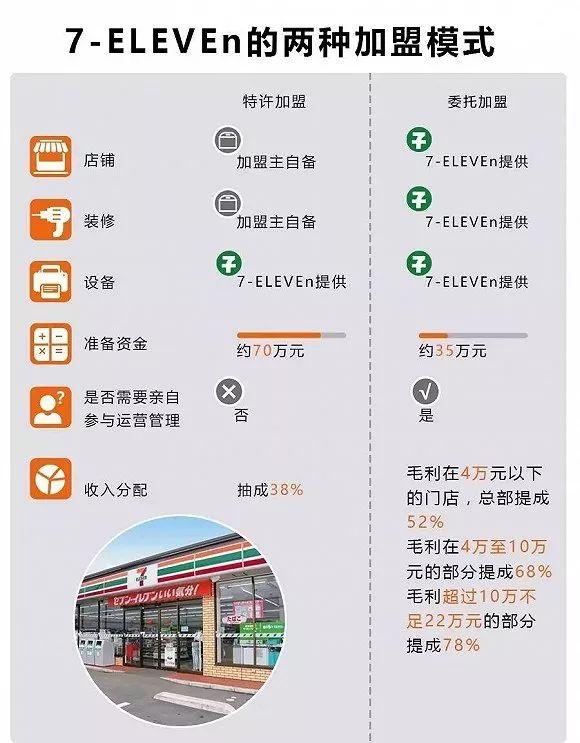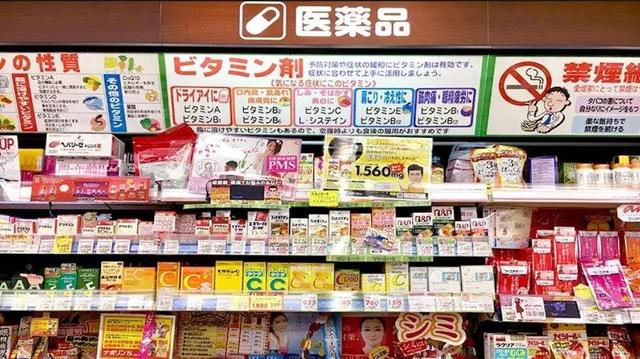15 / v2_e99daffd32134e28944e27436060d63b_img_000 “data-img-size-val =” 614,411 “>
Convenience stores are playing an increasingly important role in the retail industry today, grabbing a large number of emerging market shares with their flexibility. So how did 7-ELEVEn, one of the pioneers in the industry, embark on the road of rise?
The sale of 7-ELEVEn has also failed from birth to bankruptcy
What most people don’t understand is that 7-ELEVEn, which is famous for Japanese management, was actually an American company.
The 7-ELEVEn (7-11) chain convenience store was born in Dallas, Texas in the United States. The predecessor was the Southland Ice Company established in 1927. Its main business is retail ice products, Milk, eggs.
7-ELEVEn was originally named Tote’m Stores. Until 1946, The Southland Corporation extended its business hours from 7 am to 11 pm, hence the name of “7-ELEVEn”. Come.
10-years after 7-ELEVEn started franchising (FC) operations in 1964, in 1974, Japan ’s Ito Yokado signed a regional franchise agreement with the American South Corporation, and Japan ’s first 7-ELEVEn.

In the 1980s, the “neo-liberal” economic policy implemented by the United States gradually improved the economic situation in the United States. It was a golden decade for the development of modern consumer industries in the United States. ELEVEn failed at this stage.
Now it seems that 7-ELEVEn failed in the United States for several reasons:
First, the convenience is poor. The land area of the United States is large, and the regional division is relatively obvious. Most convenience stores are located near commercial areas and far from residential areas. Ordinary people cannot reach by foot or bicycle, so the convenience of 7-ELEVEn convenience stores for Americans has greatly decreased. .
Second, under competitive pressure from shopping malls and discount stores. U.S. convenience due to capital expansionrcdn.com/20200215/v2_0fb4c058e9e648e9a372dc40fc06d337_img_000 “data-img-size-val =” 640,427 “>
And local competitors such as Convenience Bee have broken through 1,000 stores nationwide from the first stores opened in 2017 to September 2019. Compared with such fast-spreading local players, 7-ELEVEn in China seems to be a bit “unconvinced.”
There are many reasons why 7-ELEVEn failed to replicate the speed of expansion in Japan.
First, high service standards, one of the keys to 7-ELEVEn’s victory, have become a problem restricting the expansion of 7-ELEVEn in the Chinese market environment.
Compared to local convenience stores in China, the cost of opening a store is higher under the management standard of 7-ELEVEn. According to industry data, the investment cost of a 7-ELEVEn store is about 700,000 yuan, and the product pricing Compared to the market is also high.
In the industry, when communicating with the “Explosion Rule”, it has been stated that the cost of at least 20% increase in the transformation of old Chinese convenience stores in accordance with the management model of Japanese-style convenience stores such as 7-ELEVEn.

At the same time, it is not easy to find 7-ELEVEn-compliant sites and paving in China in accordance with the requirements of 7-ELEVEn. China ’s urban planning is very different from Japan. The roads are wide and the distance between communities is large, making it dense. Opening a store is more difficult to implement.
Second, the supply chain of China’s convenience store market has not been fully developed. Without a complete supply chain, foods with short shelf life, foods that need to be refrigerated, and desserts cannot be supplied normally, or they are easily deteriorated during transportation, which has led to Japan’s The supply chain model cannot be maintained in the Chinese market. This also forces Japanese convenience store chains to make changes to the Chinese market.
Third, the spirit of service that helped 7-ELEVEn open the situation in the Japanese market that year did not continue well in the Chinese market.
A simple example, 7-ELEVEn’s food is mostly cold food such as pasta, rice balls, sushi, etc. In contrast, local convenience stores have started to make hot and dry noodles, which are more “grounded” and more in line with Chinese consumers. Chinese food, hot fast food.

Under the development of China’s new retail industry, the digitization of convenience stores has become a general trend.
Whether 7-ELEVEn, which has won the industry leader through clear positioning, comprehensive and rapid response to customer needs, and high standard service requirements, can it continue to upgrade and transform in the rapidly changing and complex environment of the Chinese market. This is another proposition that 7-ELEVEn faces in the new retail era.
Follow “baokuanfaze”, reply [Explosive Products], and see the recent surge in electrical goods data.